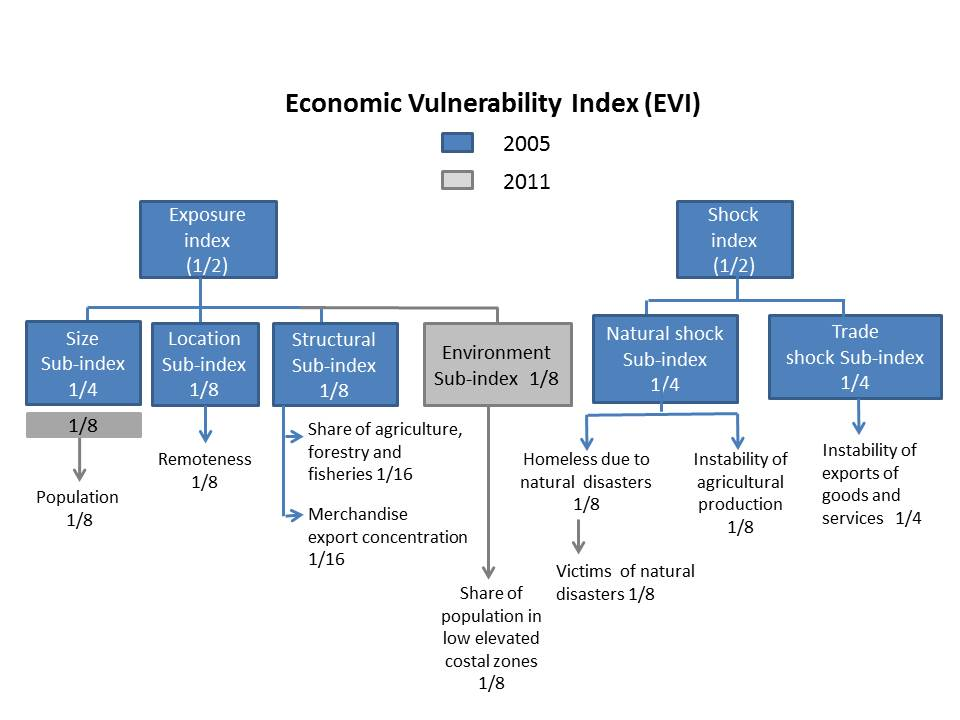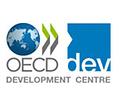





This indicator is a synthetic index of structural vulnerability, independent of resilience, composed of the magnitude of shocks as well as the exposure to shocks. The EVI is the simple arithmetic mean of these two components, with the following weights in the 2012 index and the 2015 reviews :

The Economic Vulnerability Index EVI is made available at http://byind.ferdi.fr in a retrospective version based on the definition of the index adopted in the 2015 LDC Review of the United Nations Committee for Development Policy.
Calculated in 2011 by Patrick Guillaumont and Joël Cariolle, the retrospective Economic Vulnerability Index (EVI) indicator then covered 128 developing countries over the period 1975-2008. In 2016, thanks to the collaboration of UN DESA, Sosso Feindouno and Michaël Goujon calculated a new retrospective EVI with annual frequency, covering 145 developing countries over the period 1990-2013.
2020 update
The retrospective Economic Vulnerability Index (EVI) indicator, using the methodology developed by S. Feindouno and M. Goujon in Working Paper 147, has been updated.
It now covers the period 1975-2018 and is available on the website: http://byind.ferdi.fr/en

In December 2014 FERDI launched an innovative tool for building your own Economic Vulnerability Index.
The "build your index" website uses retrospective EVI data that the FERDI regularly produces and makes available to the public on its website. The current series cover 145 developing countries from the 1970s to 2016.
Version : 2020-02-13
© Ferdi





